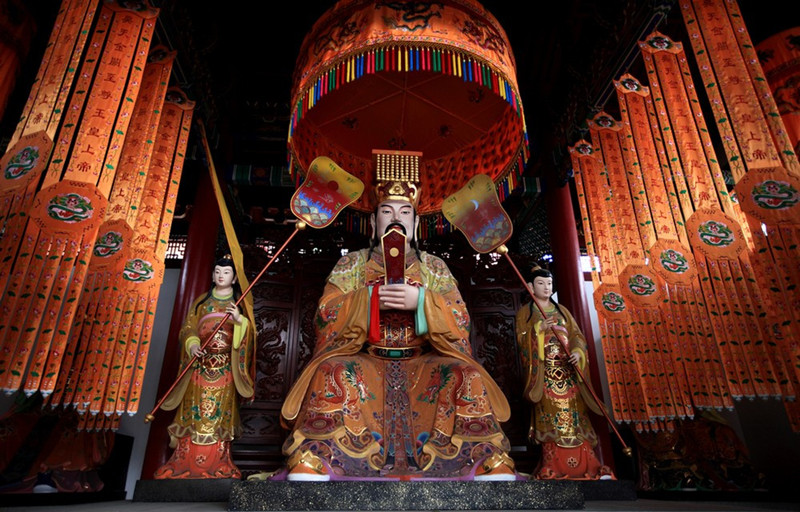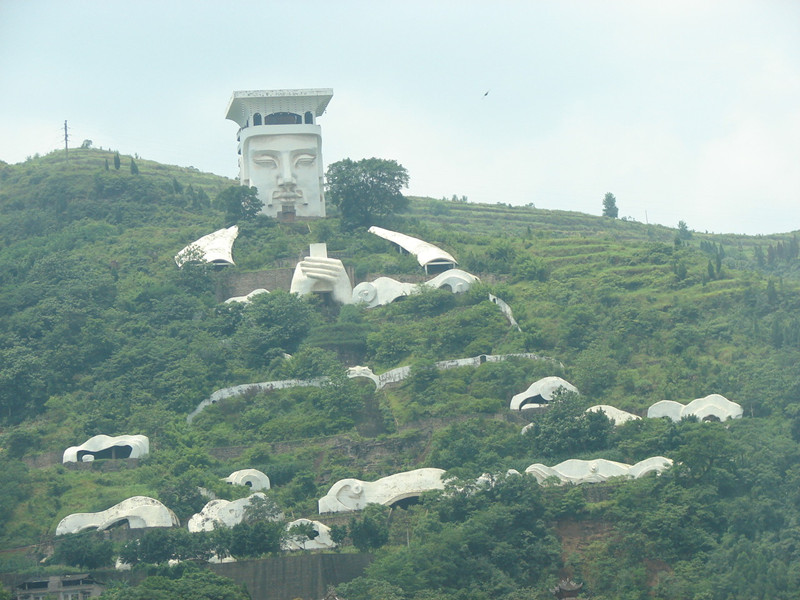Located on the northern bank of the Yangtze 176 kilometers downstream from Chongqing, Fengdu Ghost City has become one of the most popular shore excursion sites for many popular Yangtze Cruise Ships.
Situated on the northern bank of the river between Zhongxian and Fuling, the city was depicted as the ‘City of Ghosts’ in two ancient, classic Chinese works – “Monkey King” and “Strange Stories from a Chinese Studio”. The origin of the town’s extraordinary reputation can be traced back to the Han Dynasty (206 B.C. – 220 A.D.) when two officials, Yin and Wang, became Taoist recluses here and eventually Immortals. Later in the Tang Dynasty, their names were combined to mean “King of the Underworld”.
To Chinese, the social structure in the underworld is exactly like that in the real world. In hell, spirits would go through a whole bureaucracy of underworld officials to receive their final judgments. Those pure spirits would be rewarded and those sinful ones would be subject to severe punishments. The temples built on Ming Mountain display punishing instruments and wild demon images, which vividly depict the Chinese people’s imagination of Hell.
Thereafter, Mt. Mingshan gained its reputation as the ‘City of Ghosts’ where the king lived.
Today, the town throngs with many tourists who come to visit temples and shrines dedicated to the gods of the underworld. Landmarks here bear horrific names – Last Glance at Home Tower, Nothing-to-be-done Bridge, and Ghost Torturing Pass – the three trials for ghosts who wanted to enter the nether world.
It got its reputation as the “Ghost City” in the Eastern Han Dynasty. Two officials from the imperial court: Wang Fangping and Yin Changsheng, got bored with the political life in the court and came to Mt. Minshan outside Fengdu City to practice Taoist teachings. Both of them later became immortals by carrying out self-cultivation. This story widely spread and Mt. Minshan became famous. When combined together, their surnames Yin and Wang, sound very much like “King of Hell” in Chinese. Hence the people began to call Fengdu the “Ghost City”.It was the legendary capital of The Ghost King sculptured statue is 138 meters high and 217 meters wide. The tongue only is 81 meters long and mouth 70 meters wide. The pictures are carved in to the mountain for a depth of 26 meters. Visitors can climb the body of the king to the top of the mountain. Guinness World Records has listed it as the biggest sculpture carved on a rock.Ghost State by Daoists.
With temples constructed on the Ming Hill by the river bank and many statues of ghosts and devils molded in the temples, these terrifying statues describe the after-life where people who disobey ancient Chinese morals are punished in every horrifying way. By the standard of Hollywood movies, it should be rated the highest level.
From the ship pier, you can climb the winding cobblestone road or take a cable car to reach the 288 meter-high hill. Some ships arrange an early night visit to the ghost city just to catch the terrifying effects.
Nothing-to-be-done Bridge (奈何桥)
The bridge is composed on three identical stone arches, and the middle one is used for testing people. There are different protocols for crossing the bridge depending on your gender, age and marital status.
Below the bridge are square-shaped pools of water. Virtuous people will pass over the bridge without obstacle; villainous people will fall into the pools below. The other two arches are called the golden and silver bridges respectively. When preparing to leave, visitors are encouraged to pass these two bridges because according to local superstition this will bring them good fortune.
Ghost Torturing Pass (鬼门关)
The Ghost Torturing Pass is the second test before enter into the nether world. It is said that this is the place where the dead report to the Yama, the King of Hell, for judgment. In front of the structure there are eighteen sculptures depicting ferocious demons. Each of these devils is quite lifelike creating a feeling of true eeriness.
Last-Glance at Home Tower (望乡台)
This ghostly structure was built in 1985 and commemorates the site where spirits consigned to hell could take one last look at their families.
Tianzi Palace (天子殿)
Having over three hundred years’ history the palace covers an area of nearly 2,908 square yards. It is composed of a temple gate (paifang) and the palace itself.
The gate is an archway made of wood and stone rising to height of nearly 33 feet. The palace is the nerve center of the Ghost City and is the oldest and largest temple on Ming Mountain.
